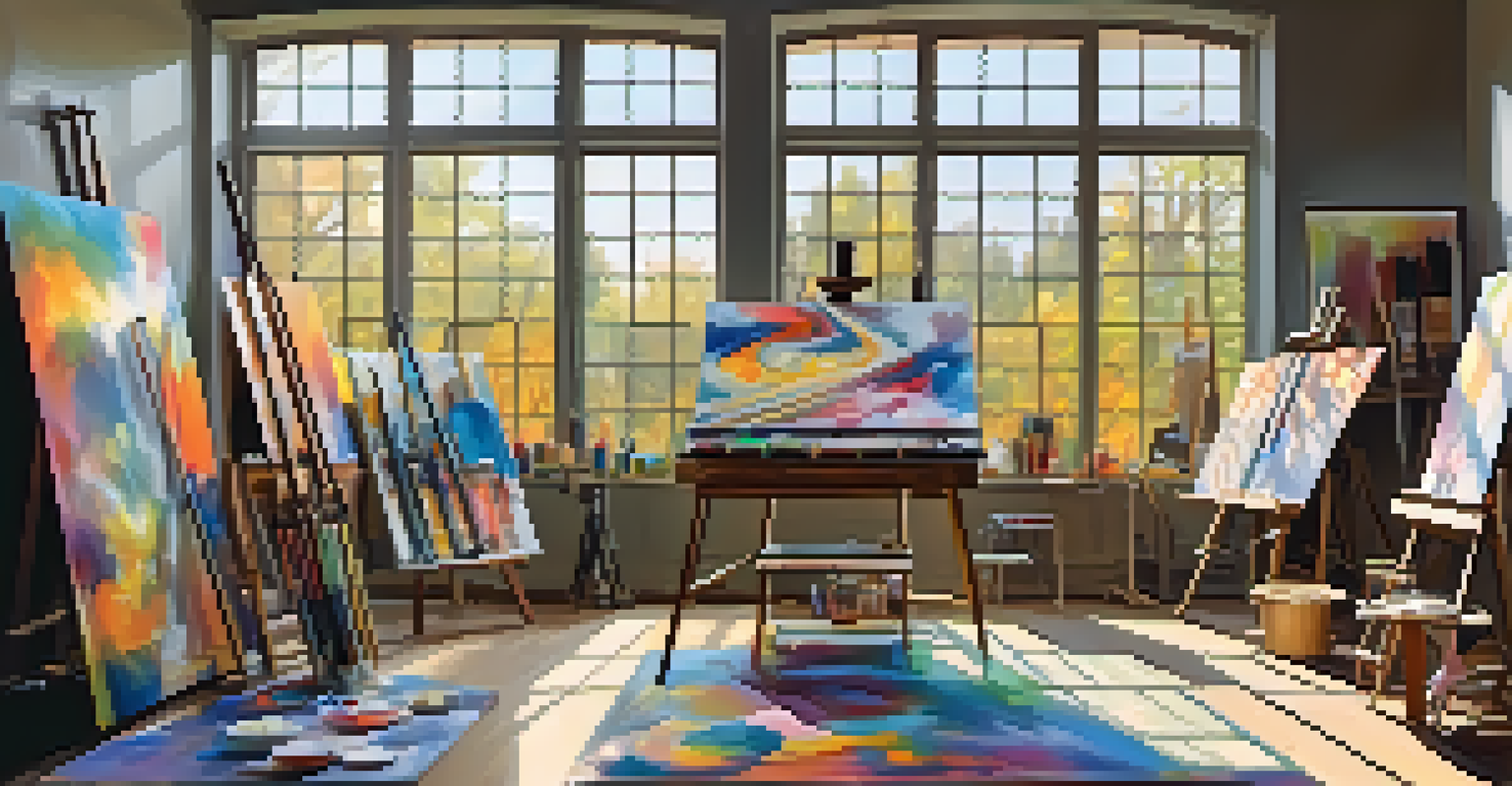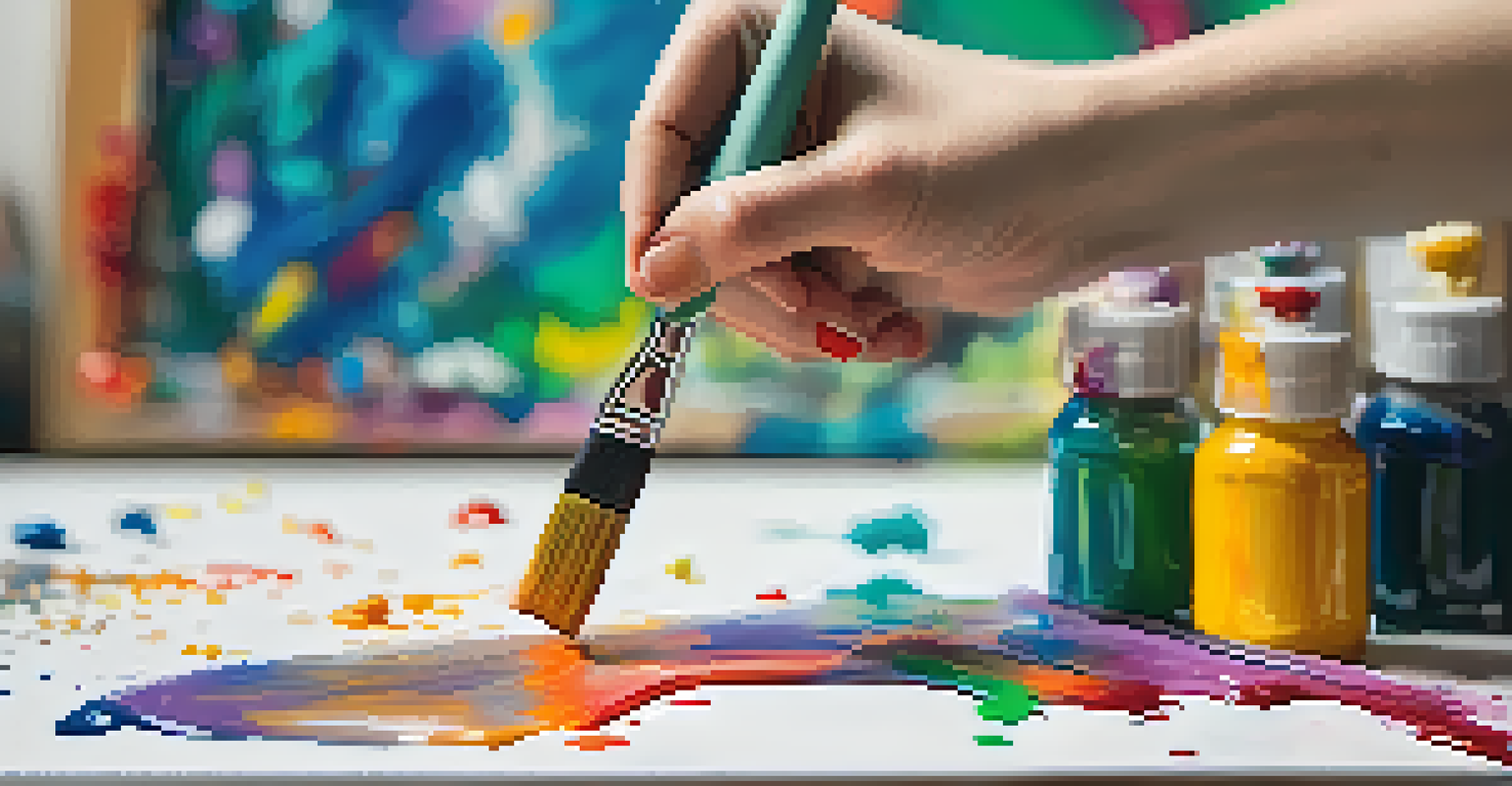The Ethics of AI in Art Creation: Innovation and Morality

Understanding AI's Role in Art Creation
Artificial Intelligence (AI) has made significant inroads into the art world, transforming how we create and experience art. From generating paintings to composing music, AI technologies are becoming more prevalent. This evolution raises important questions about the role of AI as a creator versus a tool used by human artists.
Art is not a mirror held up to reality, but a hammer with which to shape it.
As we explore this topic, it's essential to acknowledge that AI can mimic styles and techniques, producing impressive results. However, the emotional and cultural contexts that human artists bring to their work are often absent. This distinction prompts us to consider whether AI can truly be considered an artist or merely a sophisticated machine.
Ultimately, understanding AI's role in art creation is crucial for evaluating the ethical implications. The intersection of technology and creativity invites us to rethink traditional notions of authorship and originality, setting the stage for deeper discussions about innovation and morality.
The Innovation of AI Art Tools
AI art tools, such as generative adversarial networks (GANs), have revolutionized how artists approach their craft. These tools enable creators to experiment with new styles and techniques, pushing the boundaries of imagination. While some may view this as a threat to traditional artistry, others see it as an exciting opportunity for experimentation.

For instance, artists can collaborate with AI to develop unique pieces that blend human intuition with machine learning. This fusion of creativity can lead to groundbreaking works that challenge our perceptions of art. However, this innovation also raises questions about the authenticity of the final product and who should receive credit.
AI Challenges Traditional Artistry
The rise of AI-generated art prompts a reevaluation of authenticity, authorship, and the emotional depth traditionally associated with human-created works.
As we embrace these AI-driven innovations, it's vital to consider their implications for the art community. This includes addressing the potential for creative stagnation if artists rely too heavily on AI tools, as well as the responsibility artists have in representing AI-generated work ethically.
Copyright Concerns in AI-Generated Art
Copyright issues are a significant concern when it comes to AI-generated art. Traditionally, copyright protects the rights of human creators, but the question arises: who owns the rights to an artwork created by an AI? This ambiguity complicates the legal landscape, as existing laws may not adequately address the nuances of AI-generated content.
The best way to predict the future is to invent it.
For example, if an AI creates a painting based on the style of famous artists, who gets the credit? The original artists, the programmers of the AI, or the AI itself? These questions highlight the urgent need for new legal frameworks that can address the unique challenges posed by AI in the creative field.
Navigating copyright concerns requires a balance between protecting human creators and acknowledging the role of AI in artistic production. As the art world continues to evolve, finding equitable solutions to these challenges will be essential for fostering innovation while respecting creators' rights.
Ethical Implications of AI in Art
The ethical implications of using AI in art creation are complex and multifaceted. On one hand, AI can democratize art-making by making tools accessible to a wider audience. This can empower individuals who may not have traditional artistic skills to express themselves creatively, promoting inclusivity in the art world.
On the other hand, there is a risk of devaluing human artistry. If AI-generated art becomes more prevalent, it may overshadow the efforts of traditional artists, leading to questions about the worth of human-created works. This dynamic creates a moral dilemma that artists and consumers alike must grapple with as they navigate this new landscape.
Copyright Issues in AI Art
Navigating copyright concerns in AI-generated art is complicated, as existing laws struggle to address the unique challenges posed by machine-created content.
Ultimately, the ethical implications of AI in art creation compel us to reflect on our values as a society. As we embrace technological advancements, we must also ensure that we uphold the importance of human creativity and the emotional connections that art fosters.
The Debate Over Authenticity in AI Art
Authenticity is a cornerstone of the art world, and the rise of AI-generated art challenges our understanding of what it means for a work to be 'authentic.' When a piece is created by an algorithm rather than a human artist, can it still be considered genuine? This debate leads to intriguing questions about the nature of creativity and the essence of art.
Some argue that authenticity lies in the artist's intention and emotional expression, which AI lacks. Others contend that the innovation and novelty of AI-generated works can hold their own form of authenticity. This divergence in perspectives emphasizes the need for ongoing dialogue about the value we place on different forms of artistic creation.
As we navigate this debate, it becomes clear that the definition of authenticity in art may need to evolve. Acknowledging the unique characteristics of AI-generated works alongside traditional art forms can help foster a more inclusive understanding of what art can be in the digital age.
The Role of Human Oversight in AI Art
While AI can generate impressive artworks, the role of human oversight is crucial in the creative process. Artists can guide AI, providing context, direction, and personal touches that elevate the final product. This collaboration highlights the importance of human creativity in shaping AI's output, ensuring that art retains its emotional depth and cultural significance.
Moreover, human oversight can help address ethical concerns surrounding AI-generated art. By remaining involved in the creation process, artists can make conscious decisions about the themes and messages conveyed in their work, thus maintaining a sense of responsibility. This partnership between human and machine can lead to more meaningful outcomes.
Human Oversight Enhances AI Art
The role of human oversight in guiding AI art creation is essential for preserving emotional depth and cultural significance in the final artworks.
Ultimately, recognizing the value of human oversight in AI art creation can enhance the creative process. It encourages artists to embrace technology while ensuring that their unique voices and perspectives continue to shine through in an increasingly automated world.
Future Perspectives on AI and Art Ethics
As AI continues to evolve, the future of art creation will undoubtedly change. Artists, technologists, and ethicists must engage in ongoing discussions about the implications of AI in the art world. By addressing ethical concerns proactively, we can pave the way for a harmonious coexistence between human creativity and technological innovation.
Looking ahead, it will be essential for educational institutions to incorporate discussions about AI and ethics into their curricula. By equipping aspiring artists with the knowledge and skills to navigate this landscape, we can foster a generation of creators who are both innovative and ethically aware.

In conclusion, the future of AI in art creation presents both challenges and opportunities. By embracing the complexities of this relationship, we can ensure that the art world remains a vibrant and meaningful space that celebrates creativity in all its forms.